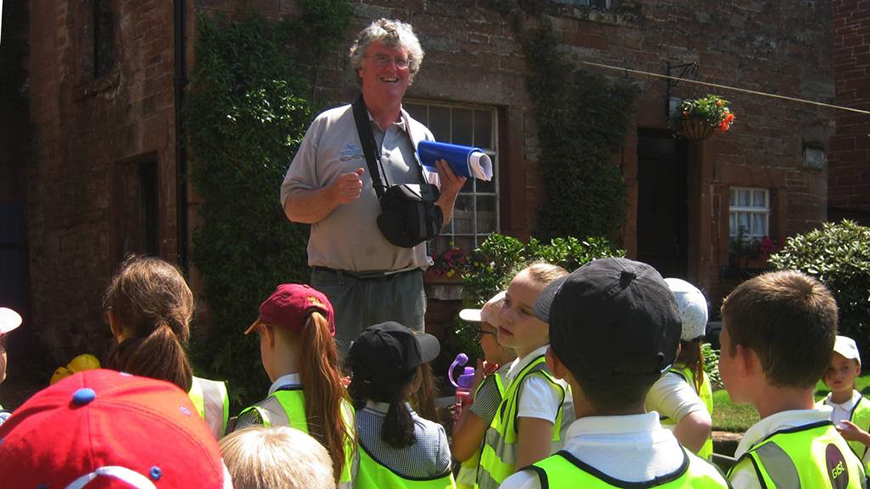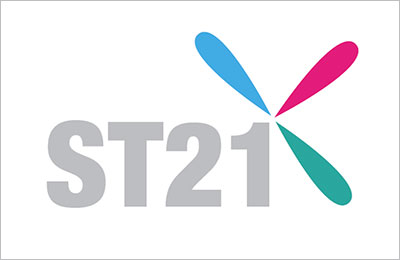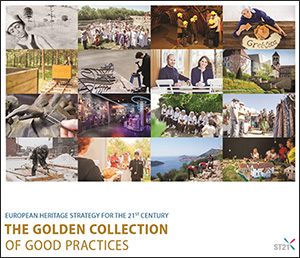Location of the initiative:

Relation to Strategy 21 Recommendations:
D2 - Support and promote the heritage sector as a means of creating jobs and business opportunities
Time span of the initiative:
Start Date: August 2015 / End Date: October 2019
Motivation / Methodology
This project delivers against the following Strategy 21 development challenges: main themes: D2,D8,S1,S2,S6,S9,S10; contributory themes: D1,D5,D7,D10,D11,K6. We wanted in one project to demonstrate that historic buildings and traditional practices are socially relevant, economically viable and environmentally sustainable. Most surviving water-powered corn mills (if machinery survives) are museums but we wanted to show there is a market for traditional food and centuries-old production skills. We wanted to overcome ‘silo’ barriers that exist between mainstream business and food provenance as part of society’s conscience about environmental sustainability – to make the project ‘open access’ to education, learning, community engagement and renewable energy. That is a lot to expect from one mill – one that is in the top 8% of the half a million designated national monuments in England! We began seeking expert advice on all of the component activities. Fortunately, the mill had operated until the 1980s so most of the milling machinery from the nineteenth century was intact. Records of mills on this site go back to 1169, so the building and machinery have stories to tell. Waterwheels are not very energy efficient but this one is huge, so generating power for production and power was realistic. Mills have always been at the heart of local community economies and so the opportunity to involve people in all aspects from local history to buying community shares has received considerable support. Though there is growing interest in quality locally-sourced foods, there are few artisan/craft bakeries within a one hour drive so we knew we would be filling a gap in the market. We also found that the nearest skilled millwrights are over 200km away, so we needed to invest in developing skills on site to maintain the mill. Our sequence of research, conservation surveys, business feasibility and market testing took several years to enable us to have confidence our vision could be delivered and operate successfully. Works involving water courses require demanding conditions to be met as the project would also have an impact on wildlife habitats and flood risk. Altogether, the project would combine the widest range of planning, development and operational expertise seen in a mill in this part of the UK – a project for which we had no precedent or model to follow. Undaunted, we have raised about £2m (2.4m euro), which enabled us to buy the mill in 2015 and begin the project. As a heritage-led project, we needed to protect the building, which had been on the national Heritage at Risk register since it was launched in 1998. That meant reroofing part. The mill was flooded in December 2015, but this was an opportunity to begin the relationship with the village kindergarten by allowing children to be the first people back into the mill after the flood to see how this robust working building survived. Since then we have built relationships with schools and colleges, residents, municipalities, interest groups and all those who now can glimpse the vision and benefits. In April 2019 we turned the waterwheel for the first time in 30 years and launched the community share issue to create of a Community Benefit Society to run the mill for us in conjunction with an experienced not-for-profit social enterprise. The mill will be commissioned in the autumn and open for business later in 2019, creating much-valued employment and volunteering opportunities and will include stoneground flours, bread products, courses in traditional breadmaking, heritage and renewable energy engineering, and local history. All this has become possible because of the methodology: take time to understand the heritage asset, formulate a well thought-through business plan, for people to be able to see what you see and feel involved rather than just informed, and to find ways in which the project happens with them, not for them. The project delivers against all three Strategy 21 components.
Obstacles / Barriers
Reviving historic buildings ‘back from the dead’ is not always universally welcomed: some people are used to the ‘quiet neighbour’ and become concerned at possible noise, especially from reenergised industrial buildings. Attitudes vary, especially across Europe, about what good practice is for conservation of historic buildings and how much industrial building machinery should be reused, possibly prejudicing authenticity of components. And even if people agree with the aims, believing that such ambition can actually be achieved when previous owners have not succeeded is a test of faith. Projects are not just about finance and resources but changing attitudes: to see beyond the reality of dereliction to the promise of recovered, useful heritage. All of which can only be considered once ownership of the asset is secured. Our first involvement in this project was in 1999 when we knew the mill was significant but at risk. However, the property market was buoyant, and the owner wanted a price significantly more than the valuation. It was over ten years later when the personal circumstances of the owner and a downturn in the market reopened negotiations. In the meantime, the mill had spent another decade out of use, so the machinery had deteriorated and costs risen. However, the mill is next to the main road serving Hadrian’s Wall, part of the Frontiers of the Roman Empire World Heritage Site, interest in artisan/craft baking had significantly increased (though not new bakeries). Markets prefer the safety of clusters and evolutionary growth, so building support for converting dereliction into a niche market entrepreneurial business was a lot to ask. Add to that the complications of it being a constrained site in an active flood plain and perceptions among agencies and funders were very sceptical, if sympathetic. What exactly was this project: heritage, business, environment, community? By answering ‘all of the above’, some opinions felt that we lacked focus and were being too ambitious. And yet the USP of the project was that it would do (and needed to do) all of these things and more. Fortunately, the Trust has been around for over 50 years and has a track record to demonstrate that we can do, and have done, projects requiring a range of expertise. People who did not know us thought that as we are a charity, we would not be sufficiently business-mined, and as our reputation was for restoring old buildings, we would not understand community needs. Most of those concerns have been addressed. However, the flooding of the mill in 2015 just months after we acquired it also raised doubts whether the mill could realistically withstand the cost and disruption of future floods and be a resilient, viable business. Despite being under 1.5m of water for 48 hours, the only damage was a layer of river silt that could be cleaned, and dampness which would dry out. If it happens again we imagine the mill will only be out of action for less than a week. Running water through the mill has raised anxiety about us causing localised flooding if the mill blocks the flow. Reassurance can only come from operation. There is limited on-site parking, so some local people have been concerned about customer traffic, but the mill will largely be wholesale as a business; volunteers and people attending courses will park at the nearby community centre. What people can now begin to see is that the courses offer opportunities for local accommodation providers, and the mill can supply cafés, business lunches and retail outlets. What had become a stigmatised liability of a neglected building is now becoming a social enterprise business asset, and an educational resource on the doorstep of the community. By involving people throughout, the development phase has proved as revealing, relevant and accessible as it will be in operation. When the doors open, and the first loaves are baked, it will already be ‘community owned’ – an old neighbour reborn, with a new story to tell.
Change / Impact
First, we had to engender belief in us, then that the building could be restored, then that it could be reused, and then that local people who value the mill as ‘theirs’ could become directly involved, not just to be observers. Changing attitudes is an essential pre-requisite for belief that heritage has a real contribution to make to the economy, the environment and community – and ideally, all three together. Attitudes cannot be changed by ‘parachuting in’ and disappearing after the project; we must build relationships and show commitment. These are the soft skills on which genuinely sustainable projects need to be built. We have been fortunate that we have had the time to persevere and wait, and the building has survived with limited deterioration over the decade of delays. The mill has been a specific focus for people to rally around, and its prominence in the village means progress is visible week-by-week. The village school has adopted the project because it offers so much first-hand educational experiences across the whole curriculum, and interested children mean curious parents. The building contract has enabled us to employ two people based on site instead of in a remote office, so they are seen, known and accepted. The amenable attitude of the contractors has meant curiosity has not been rebuffed by ‘building site: keep out’ signs, but instead, explanatory chats. An apprentice has been employed, and the village café has enjoyed a significant boost in trade by workers buying food and drinks. We have run traditional skills training events with the village church (also nationally important), we have a support group from the local history society, and we already have over 20 regular volunteers on site. The adjacent Bed and Breakfast accommodation has boosted business. The public meeting attracted 40 local people, almost all of whom expressed interest in buying community shares in the organisation that will run the mill, and more than a quarter of whom said they would like to be involved in setting up the new community benefit society that will take responsibility for running the mill. The success of much of this has depended on attitude: success requires people to want to do things, and to do so with us and among the community to have a working consensus. None of which can be taken for granted. The benefit of all this is that the economic, environmental and social hopes for the project have all been raised higher, and crucially exceeded our expectations for integrating these themes, which so often are developed independently. In four years, we have moved from scepticism to curiosity to belief to expectation to ‘ownership’. The ‘we’ that began as a specialist charity has become the ‘we’ of a much wider pool of people with all kinds of interests, goodwill and support. It has been an extremely complicated project with too many obstacles to take in our stride, not least the funding challenge, but even our perseverance has inspired people into considering that if we are that committed, then so should they be.
Lessons learned
The reason for proposing this project as one of the good practice examples for Strategy 21 is that corn mills were present in every community across Europe for centuries. They were the source of the most essential food for life, bread, and were rooted in the landscape to derive natural power, so often they dictated where settlements were developed and societies were established. Though many have been demolished, place names and the infrastructure of mills perpetuate their memory. In addition, of all the trades of a community, the miller would be named, so there is the personified documentary record of society and its economy as well as geo-locational evidence to provide historical continuity. Corn mills are therefore arguably the most appropriate single historic building type to embody all of the components of Strategy 21, being examples of good practice, but also becoming an inspiration for making inter-disciplinary principles workable. By definition, the search for examples of good practice means they must be capable of being replicated in and adapted to the widest range of circumstances. This project shows that restoration should not be limited to conserving walls and machinery as objects but as a sustainable reuse of existing resources. And that means all aspects – the skills, the social focus, food provenance (including regional variations), inter-generational education, the economy (employment, catering/hospitality, tourism), renewable energy, biodiversity. These are not nationally defined or constrained themes but universal and international; the lessons we have learned in this project are a currency that is transferrable across Europe. In fact, the lessons on this project in the UK have benefitted from and been informed by my involvement across Europe – Europa Nostra (member of the board; Cultural Heritage Counts for Europe; plus 7 Most Endangered missions), FEMP (executive committee), Europeana (Network Association member), ViMM/Hermes (digital cultural heritage partner), E-Faith (industrial heritage). Projects like this, in being exemplars, do not conclude with answers but prompt new questions about how to go on – to learn by adapting and developing the lessons in other circumstances and with other people. Where we would like to go next, and which was not available for this project at the beginning, is use of improving digital cultural heritage technology and techniques to bring all of these aspects together into a co-ordinated research, educational and training tool for all abilities. I was the UK National Co-ordinator for 2018 European Year of Cultural Heritage. Despite the uncertainties of Brexit, it was possible to host a programme of over 600 events across the UK, as well as supporting and encouraging great co-ordination of the various European Heritage Days programmes (which this mill participated in). Each theme of Strategy 21 has exemplar initiatives and networks in which members/projects can share experiences. This project has already demonstrated that the sum of the parts can be greater than the whole if genuinely integrated inter-disciplinary activities are carried through from concept first principles to living reality. Governance and management of the project will transfer from us as initiators to the community as sustainers. These are complementary roles not necessarily capable of being fulfilled by the same people or organisations, so continuity is a lesson to be learned and passed on. Again, it is about relationships which underpin capacity from available resources. To avoid reinventing the wheel, and to build on the growing repository of good practice, the project would seek to compare experiences with other initiatives recognised by Strategy 21, giving the community in this UK project a European perspective of the significance of what they are contributing to. That exchange of ideas, values and experiences is in itself, an essential component of good practice.
Online resources
- Project Facebook page: Warwick Bridge Corn Mill Organisation;
- Facebook: North of England Civic Trust (about to change to Cultura Trust);
- Twitter: @gb_culturatrust
Contact information
Graham Bell
NECT / Cultura Trust
[email protected]
www.culturatrust.org
Source of financing
Public financing
Financing details
£2m / 2.4 euro capital and revenue





